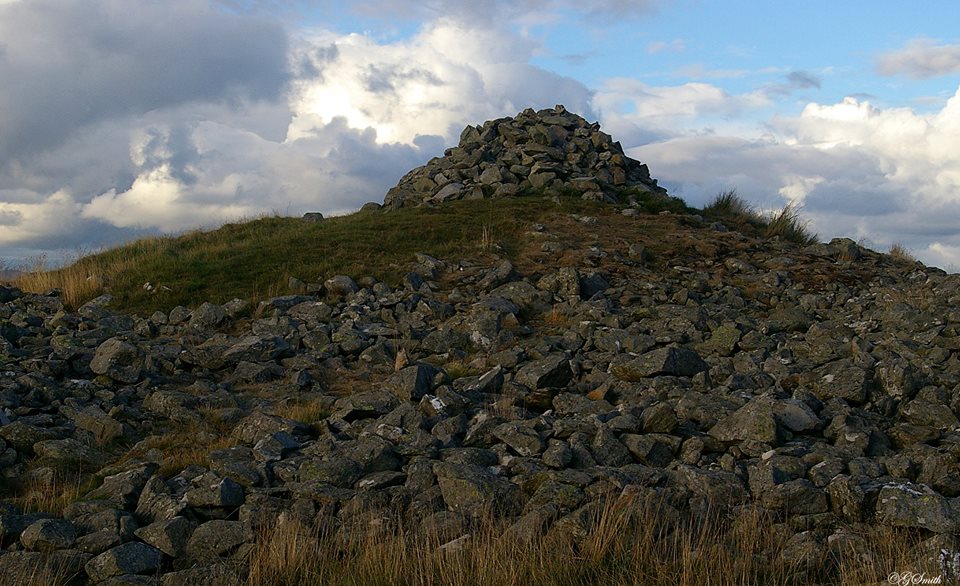Caer Drewyn on:
[Wikipedia]
[Google]
[Amazon]
 Caer Drewyn is an early
Caer Drewyn is an early A short guide to Caer Drewyn Hillfort
accessed 3 March 2014
 Caer Drewyn is an early
Caer Drewyn is an early Iron Age
The Iron Age is the final epoch of the three-age division of the prehistory and protohistory of humanity. It was preceded by the Stone Age ( Paleolithic, Mesolithic, Neolithic) and the Bronze Age ( Chalcolithic). The concept has been mostl ...
hillfort
A hillfort is a type of earthwork used as a fortified refuge or defended settlement, located to exploit a rise in elevation for defensive advantage. They are typically European and of the Bronze Age or Iron Age. Some were used in the post-Roma ...
to the north of the town of Corwen
Corwen is a town and community in the county of Denbighshire in Wales. Historically, Corwen is part of the county of Merionethshire. Corwen stands on the banks of the River Dee beneath the Berwyn mountains. The town is situated west of Llango ...
, Denbighshire
Denbighshire ( ; cy, Sir Ddinbych; ) is a county in the north-east of Wales. Its borders differ from the historic county of the same name. This part of Wales contains the country's oldest known evidence of habitation – Pontnewydd (Bontnewy ...
(Grid reference ). It has a large stone rampart with entrances on the west and north sides; there is a guard chamber within the north-east entrance, and it has a deep defensive ditch.accessed 3 March 2014
The site
Caer Drewyn is the most southerly hillfort in theClwydian Range and Dee Valley
, iucn_category =V
, iucn_ref =
, photo =Sunny Hillside, Frosty Valley Dee Valley Wales (11014647076).jpg
, photo_width =
, photo_alt =Image of the view of the Dee Valley from Moel Y Gamelin
, photo_caption = ...
Area of Outstanding Natural Beauty
An Area of Outstanding Natural Beauty (AONB; , AHNE) is an area of countryside in England, Wales, and Northern Ireland, that has been designated for conservation due to its significant landscape value. Areas are designated in recognition of ...
. It is situated on the spur of a hill between Llangollen
Llangollen () is a town and community, situated on the River Dee, in Denbighshire, Wales. Its riverside location forms the edge of the Berwyn range, and the Dee Valley section of the Clwydian Range and Dee Valley Area of Outstanding Natural Bea ...
and Corwen
Corwen is a town and community in the county of Denbighshire in Wales. Historically, Corwen is part of the county of Merionethshire. Corwen stands on the banks of the River Dee beneath the Berwyn mountains. The town is situated west of Llango ...
, just above the confluence of the River Dee and the River Alwen
A river is a natural flowing watercourse, usually freshwater, flowing towards an ocean, sea, lake or another river. In some cases, a river flows into the ground and becomes dry at the end of its course without reaching another body of wat ...
. The earliest structure was a small enclosure built against a natural rock outcrop. Today this structure is only visible as the remains of a grass-covered bank. A later, larger fortress was surrounded by a dry-stone wall, and does not have the earthen ramparts of other local hillforts. The area of the site is about three hectares. There are two in-turned entrances, one at the highest point, with the possible remains of a guardhouse beside it, and the other on the west side adjoining the remains of a rectangular building. There is a further enclosure outside that contains stone foundations of what may have been a hut platform.
History
Caer Drewyn is anIron Age
The Iron Age is the final epoch of the three-age division of the prehistory and protohistory of humanity. It was preceded by the Stone Age ( Paleolithic, Mesolithic, Neolithic) and the Bronze Age ( Chalcolithic). The concept has been mostl ...
fort dating back to about 500 BC, however it was in use as a defensive position long after this. Legend states that Owain Gwynedd
Owain ap Gruffudd ( 23 or 28 November 1170) was King of Gwynedd, North Wales, from 1137 until his death in 1170, succeeding his father Gruffudd ap Cynan. He was called Owain the Great ( cy, Owain Fawr) and the first to be ...
occupied it while Henry II of England
Henry II (5 March 1133 – 6 July 1189), also known as Henry Curtmantle (french: link=no, Court-manteau), Henry FitzEmpress, or Henry Plantagenet, was King of England from 1154 until his death in 1189, and as such, was the first Angevin king ...
was invading Gwynedd in 1165 via a southerly route, and Owain Glyndŵr is believed to have gathered his troops here in 1400 after his followers proclaimed him Prince of Wales
Prince of Wales ( cy, Tywysog Cymru, ; la, Princeps Cambriae/Walliae) is a title traditionally given to the heir apparent to the English and later British throne. Prior to the conquest by Edward I in the 13th century, it was used by the rulers ...
. The Welsh antiquarian Edward Lhuyd
Edward Lhuyd FRS (; occasionally written Llwyd in line with modern Welsh orthography, 1660 – 30 June 1709) was a Welsh naturalist, botanist, linguist, geographer and antiquary. He is also named in a Latinate form as Eduardus Luidius.
Life
...
mentioned Caer Drewyn in the late seventeenth century as "a place where they kept their cattle in war time".
See also
*List of hillforts in Wales
This is a list of hillforts in Wales.
Anglesey
* Din Sylwy (Bwrdd Arthur) (), contour fort
* Caer Idris Hillfort (), promontory fort
* Caer y Twr (), partial contour fort
* Dinas Gynfor (), promontory fort
* Dinas Porth Ruffydd (), promontory ...
References
{{coord, 52.9891, -3.3606, format=dms, type:landmark, display=title Hillforts in Denbighshire Corwen